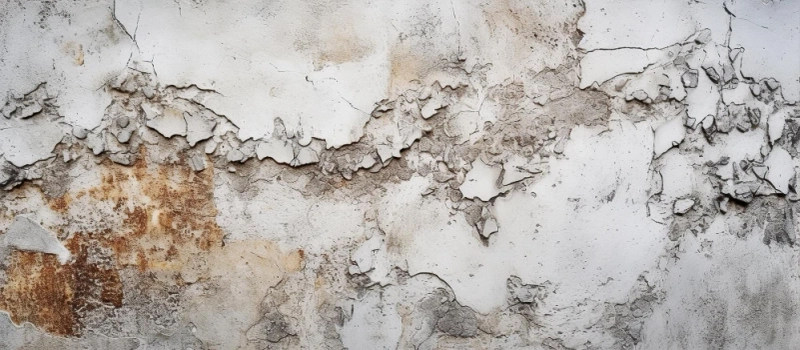Once heralded as a miracle substance because of its ability to withstand heat and act as insulation, asbestos is now known as a serious risk to human health. Inhaling the mineral fibers can cause mesothelioma and asbestosis, two crippling respiratory conditions. Even though asbestos-containing materials (ACMs) have been used in many older structures, their implementation has mostly ceased. The significance of a comprehensive asbestos analysis in such structures has increased dramatically as the health hazards connected with asbestos exposure have become apparent. Laws requiring asbestos surveys are in place due to the substantial dangers associated with asbestos products discovered in old buildings.
Why Is Asbestos Posing to be a Threat?
Owing to its longevity and resistance to fire, asbestos was included in a number of building materials during the 20th century. Flooring, roofing, insulation, and other building materials were frequently made with it. Nevertheless, as the health dangers of asbestos exposure came to light, the material's use declined and laws were passed to limit its use in construction. However, the 20th centurt saw a lot of construction with asbestos, and a huge number of these buildings are still in regular use. This translates to a huge section of the population regularly being exposed to asbestos.
Keeping in mind the health risks the material poses, asbestos analysis has been done quite frequently. Asbestos is among the deadliest things that can be inhaled and is linked to several deadly health issues. The full scope of the issue is still not know, yet millions of individuals remain exposed to asbestos for decade after decade. For instance, mesothelioma stays dormant for up to fifty years before the affected individual starts showing symptoms. In order to protect maintenance personnel and renters from long-term health impacts, it is critical to identify and control any asbestos dangers in historic properties.
Types of Asbestos Analysis
An asbestos expert, or asbestos surveyor, does asbestos analysis to look for materials that can contain asbestos. These substances may appear to be typical concrete goods, insulation, or plasterboard, but they really contain asbestos fibers, which can be fatal. The surveyor you select must be knowledgeable about asbestos products, have a sufficient quality control system, and be trained and experienced in all facets of asbestos survey work. The type of asbestos analysis you opt for will depend on what you intend to do with the building:
Management Asbestos AnalysisThe management analysis pertains to asbestos management, primarily so that those who use the building can be informed of potential asbestos locations, monitor the material's status, and take appropriate action if it starts to deteriorate. A visual inspection is typically used for management asbestos analysis, during which any hazards during regular occupancy are noted along with the state of any items containing asbestos. Typically, this kind of survey only requires a small amount of invasive work and samples. If samples are not taken, the surveyor may assume that some materials contain asbestos.
Refurbishment and Demolition Asbestos AnalysisWhen materials are disturbed during a renovation, demolition, or other kind of construction work, a refurbishment-and-demolition asbestos analysis is required. A study of renovation and demolition should always be done before beginning any construction project. This covers renovation, demolition, additions, maintenance that will disturb the current building materials, and other construction-related tasks. The buildings or regions being scanned will typically need to be evacuated in order to collect a large number of samples for this type of asbestos analysis, which is highly intrusive.
Importance of Asbestos Analysis
Older buildings, particularly those constructed before the 1980s, can include asbestos in one or more of its forms. Roofing materials, floor and ceiling tiles, asbestos-containing insulation, and even textured wall and ceiling coatings are common sources. An extensive investigation is required because the possibility of asbestos fiber leakage grows with the age and wear and tear of these buildings.
Safety and health - Determining the dangers associated with asbestos exposure and evaluating its presence are the main goals of asbestos analysis. Building owners, tenants, and maintenance staff can take the appropriate safety measures to prevent exposure thanks to this procedure. Observance of regulations - It is imperative that property owners and managers comply with asbestos standards. Prior to building refurbishment or demolition, several jurisdictions demand comprehensive asbestos analysis; non-compliance may have legal ramifications. Planning for renovation and demolition - Before starting any remodeling or demolition project in an older building, asbestos-containing items must be identified and managed. By analyzing the amount of asbestos present, these activities can be planned and carried out properly while reducing hazards. Property assessment and deals - Asbestos analysis is turning into a common procedure in real estate deals. For appropriate property assessment and to make sure that prospective buyers are aware of any associated dangers, it is imperative to ascertain the asbestos status of a given property.Final takeaway
It is impossible to overestimate the importance of asbestos analysis for old and dilapidated buildings. Comprehensive analysis is a crucial component of responsible building management because of the health hazards connected to asbestos exposure, legal obligations, and possible effects on real estate transactions. We safeguard present tenants and maintenance staff as well as contribute to the general sustainability and safety of our surrounding environment by identifying and managing materials that contain asbestos. It is a commitment to building safer environments for future generations as well as an investment in public health.



